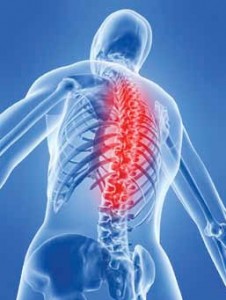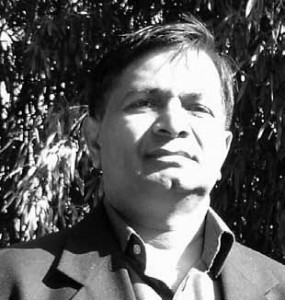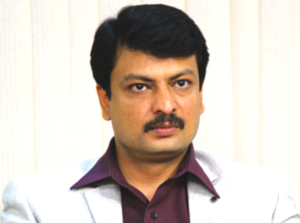 Rheumatologist is a joint arthritis specialist; he treats joint arthritis pains like a cardiologist treats heart diseases.
Rheumatologist is a joint arthritis specialist; he treats joint arthritis pains like a cardiologist treats heart diseases.
Every relative and friend is a medical advisor in India and often you have to hear them out. Sometimes out of respect, but should you follow every bit of the advice that you get.

Ten years back, deformity and destruction were foredrawn conclusion for the joints affected by arthritis, prent therapies in all the disciplines of medicines were just pain relieving. New medicines of Rheumatology has changed the scenario completely, joints do not get deformed anymore due to arthritis. So decide what outcome you want for your joints. About side effects, there are much more serious side effects of the uncontrolled arthritis than the medicines. Time and money spent on unproven therapies will never come back. Damage done to the joints during the trial of unscientific therapies will never be reveresed. It is time for consumer awareness, so be wise, be aware of the new medication techniques to keep your joints pain free throughout of your life.
Dealing with Arthritis
Arthritis simply means joint pains, stiffness or swelling due to inflammation. Fever is a symptom of hundreds of the diseases, and arthritis is a symptom caused by more than 100 diseases. Only further clinical details will reveal the actual disease.

The specialty dealing with arthritis and Rheumatism is called Rheumatology. Patients having persistent arthritis and who are unfortunate not to have been seen and treated by trained and experienced Rheumatologists, may get their joints completely destroyed requiring joint replacements by Orthopaedic surgeons at `3 lakh per joint.
Rheumatology is a recent sub-specialty in internal medicine devoted to medical management of all forms of Arthritis. Connective tissue diseases like SLE, Soft tissue rheumatism, Gout, Osteoporosis and other Musculoskeletal diseases. Clinicians who specialise in Rheumatology are called Rheumatologists. After five and half years of medical schooling and three years of training in internal medicine, Rheumatologists devote an additional two to three years in specialised rheumatology training to treat more than 100 types of arthritis.
Arthritis patients will experience pain and swelling of one or more joints, feel stiffness in the joints “ more in the morning. In some type of arthritis you may have long fever associated with skin rashes or ulcers, in others you may have stiffness and pain in the lower back, in others your fingers may turn blue in winter climate. Your joints may start making noises like grating sensation.
Inflammatory arthritis can affect any age group, but usually affects females in reproductive years. It can affect children too, when it is called JIA (Juvenile Inflammatory Arthritis). Osteoarthritis (wear and tear arthritis) usually affects old people but can occur earlier in people with history of joint injuries & in those with hypermobile joints and obesity.
Rheumatoid arthritis and other Autoimmune arthritis like SLE, Scleroderma are more common in women. However, Ankylosing spondylitis presenting with severe early morning stiffness and Gout is found more common in male population.
Exercise plays a supportive role. It may help to reduce pain and joint stiffness. Exercise also helps in increasing the flexibility, range of movement and strengthening the muscles around the joint. However, patients with deformities of the joints should consult a Rheumatologist to know about the type of exercise they need to undergo.
Osteoarthritis and Rheumatoid Arthritis are the two most common conditions we come across.
A correct diagnosis is very important for almost all arthritis types otherwise immune system will go on attacking joint & body tissues, and though the pain may be controlled, the joints will continue to erode without appropriate treatment. The message is, dont be afraid to see a Rheumatologist about your aches and pains, and dont be afraid to protest if youre told just to take a pain killer to relieve your pain without knowing the type of arthritis. Pain killers do not cure any of the arthritis types. Timely diagnosis and early treatment will stop the further damage to the joints as well as will prolong your life.
Difference between Arthritis and Rheumatism
People are often confused about the meaning of the two words “ Arthritis & Rheumatism (Gathiya & Bai). Arthritis means disease of the joints and generally results into inflammatory swelling of the joints. The term Rheumatism (Bai) is used by common people to refer to all types of diffuse or migrating body aches and pains, which may include early arthritis. We now think of four different types of treatment strategies to save your joints: Prevention is better than cure: Steps can be taken to prevent development of arthritis. Get your joints be screened by a Rheumatologist for any risk factor to ward off the development of arthritis.
Cure: In some cases, Arthritis can be cured depending upon the cause, if treated early.
Effective treatment and control of established disease: Nowadays, modern anti-rheumatic therapy rendered by Rheumatologist can save the joints from damaging effect of arthritis. Earlier treatment is better. These include disease modifying antirheumatic drugs (DMARDs), Anticytokines and anti B cell therapies.
Rheumatology treatment is getting better day by day. New anti Rheumatic drugs and procedures are safer and more effective than before. The best of old therapies is being combined with modern therapy; we call it fusion therapy to improve the quality of life.
Role of diet in arthritis
Painful arthritis occurring in men due to over consumption of alcohol, nonvegetarian food and tea or coffee can increase se blood uric acid and precipitate gout. An overweight person is more prone to develop osteoarthritis, when calorie intake needs to be controlled. Consuming fresh fruits in balanced diet and keeping normal weight will help in prevention and treatment of arthritis.
Is arthritis curable?
It depends upon the cause and the stage of the disease. Some types of arthritis may not be totally curable but are certainly controllable. After all diabetes, hypertension and other chronic diseases are also incurable, yet people take treatment for these diseases with a view to control them and save their organs. So, why neglect arthritis? At an early stage, most types of arthritis are easily controllable perhaps even curable. Prolonged treatment is required, but even this helps a lot in preventing the patient from becoming crippled. However, Arthritis does not run in families the way diabetes does. Yet a few families show traits to develop arthritis, based on their genetic makeup.
Rheumatic diseases are of more than 100 types and fall into four main groups:
Autoimmune inflammatory arthritis: This condition results, when bodys immune system attacks own healthy joint tissues, leading to inflammation and damage to the joints tissues. Rheumatoid arthritis is most common and is of the most damaging kind. It effects more than one crore people in India. Other types include Gout, Spondyloarthritis such as Ankylosing spondyloarthritis, Reactive arthritis and Arthritis associated with Colitis and Psoriasis. Other rarer disorders that can affect multiple parts of the body called connective tissue diseases such as Systematic Lupus Erythematosis (SLE), Scleroderma, Polymyositis and various vasculitides. In this group, Ankylosing spondylitis affecting young men involves low back pain causing severe back stiffness before spreading to other joints. Degenerative diseases called wear and tear diseases are most common and include Osteoarthritis of knees, hips and vertebral column (i.e., cervical and lumbar spondylosis). Soft tissue rheumatism where rheumatic pain arises from damage to areas around joints, such as ligaments and tendons. Minor injury or over use can result in localised pain which often lasts only for a short period, Tennis elbow for example. Infection: when bacteria directly cause septic arthritis, it can rapidly destroy the joints and hence is an emergency.
The treatment strategies
It depends upon the cause. A patient with arthritis, if reports early, can lead a normal life with modern anti-rheumatic therapy. Even in late stages much can be done. If symptoms of arthritis have not subsided within 04 weeks, indication is that joints are in trouble and require professional help as body has already failed to ward off the evil of arthritis by itself.
 About Author:
About Author:
Dr OP Garg, Senior Consultant Rheumatologist & HOD, Advanced Interventional Rheumatology at BLK Hospital, New Delhi
Be a part of Elets Collaborative Initiatives. Join Us for Upcoming Events and explore business opportunities. Like us on Facebook , connect with us on LinkedIn and follow us on Twitter , Instagram.








